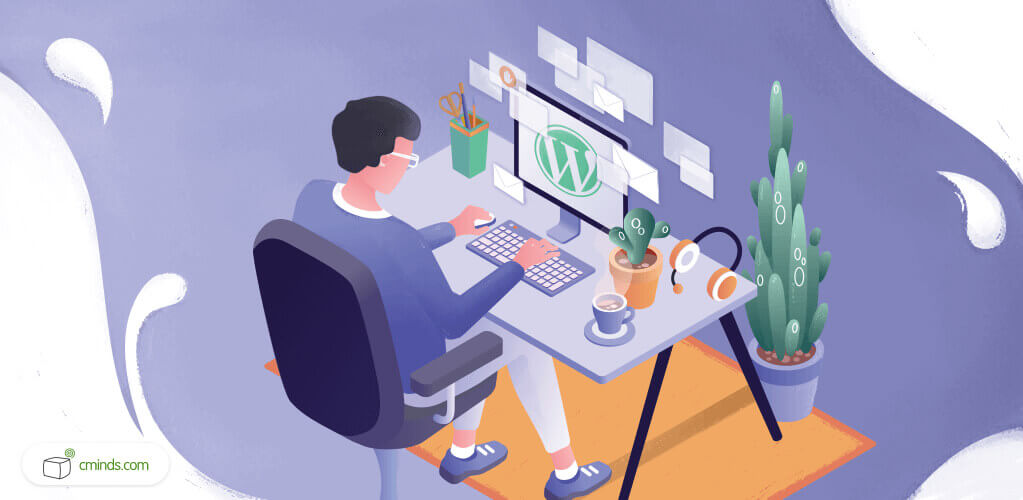WordPress has been around for nearly two decades, and it’s certainly seen some changes in that time. Join us as we recount the biggest WordPress updates.

We like to think of ourselves as know-it-alls when it comes to WordPress. After all, we do know a few fun, lesser known facts. We also know a thing or two about the biggest WordPress updates to ever go live.
WordPress is updated regularly. Each year, there are numerous changes to the platform. Most of these are security updates and regularly scheduled maintenance, of course. However, every so often the WordPress development team deliver users and coders a new gift – an update that totally changes the look, feel, and functionality of the platform.
If you’re interested in learning more about the history of WordPress, look no further. In this blog we’re running through some of the biggest updates to the planet’s most popular CMS.
April 2024 Offer – For a Limited Time Only:
Get Essential Admin Tools Bundle for 20% off! Don’t miss out!
A Brief History of WordPress

We can’t talk about changes to the platform without looking at it’s history.
WordPress was founded by entrepreneur turned web-developer Matt Mullenweg in 2003. Mullenweg wasn’t a web developer at the time, so he had some help from British developer Mike Little.
Together, they created the first iteration of WordPress – a project that was intended to build on the work of b2/cafelog. This was a defunct software that allowed people to create their own blogs.
Mullenweg couldn’t have predicted how far WordPress would come. From a small personal project to one of the biggest website builders in the world! So, how has WordPress developed over the years?
The Biggest WordPress Updates in History
WordPress 1.2: Say Hello to Plugins

The original version of WordPress was fairly simplistic. It’s first major update, WordPress 1.2, came in May 2004, a whole year after the original launch.
WordPress 1.2 bought a significant advancement to the platform: plugins.
This new architecture allowed fledgling developers to extend the functionality of WP. They could now share their plugins with the growing WP community. It also allowed users to improve their personal sites with exciting new features.
It was an excellent move for the makers of WordPress. Plugins are still an integral part of WordPress’ popularity. They arguably made the platform what it is today. WordPress adoption rates really went through the roof after the 1.2 update.
There are now over 50,000 plugins for users to choose from. Most of them are professionally made and offer great improvements to your site – just check out CreativeMinds’ collection!
WordPress 2.0: Introducing the Admin Dashboard

December 2005 bought us WordPress 2.0. It introduced another important new feature: the admin dashboard.
This update completely overhauled WPs admin screens, making the interface more user friendly. WordPress admins could now add categories and tags to posts without having to leave the post editor. They could delete comments without having to reload the entire comment section.
It was just the start of WordPress admin improvements but the 2.0 update remains one of WPs biggest changes.
WordPress 3.0: Customize, Customize, Customize

Five years after 2.0, WordPress 3.0 was released. 2010 saw the ‘Thelonious’ update, hailed as a significant step towards WordPress becoming a big player in the world of CMS.
So, what did Thelonious give us? Well, simply put, it gave a whole heap of new tools for customization. These included custom backgrounds, custom headers, and custom menus. From personal blogs to fandom pages to eCommerce webstores, it really opened up new possibilities for what WordPress websites could be.
The third iteration of WordPress also came with its very own signature theme (aptly named Twenty Ten). This started a tradition for WordPress giving us a new default theme each year.
WordPress 3.4: Focus on Themes

Two years after the 3.0 came WordPress 3.4. This was one of the biggest changes to the platform to date as it introduced the theme customizer.
The theme customizer does exactly what you would expect: it allows users to play around with the looks and settings of their chosen theme. You could now do this without having to publish it to the world while it’s still a work in progress.
For supported themes, users could now change colors, backgrounds, and custom image headers with ease.
WordPress 3.7: Updates While You Sleep

By 2013, WordPress was already one of the most popular content management systems on the planet. Because of this, the company was seeking to put out improvements to security and ease of use.
And so 2013 also saw the 3.7 update – also known as Basie – which introduced several big changes including automatic updates.
One of the most controversial WordPress updates, the automation is intended to take the hassle out of maintaining your WordPress site. Updates became automatically applied, allowing users to get on with the other, more important stuff.
These updates also included faster translation, a big plus for the millions of users who use the platform in languages other than English. It also improved localized support.
The Basie update also introduced stronger security measures for everyone as it provided users with stronger password recommendations.
WordPress 5.0: The Gutenberg Editor
At the end of 2018 we got one of the biggest updates to WordPress in it’s 17 year history. This came in the form of the Gutenberg editor.
Gutenberg completely overhauled the WordPress editor. Before this it had remained largely unchanged since 2003. This old-style user interface had become outdated, and it was time for a smart new look. We certainly got that with Gutenberg!
Gutenberg revolutionized the way users build their WordPress websites. Called a “block editor,” the new style tool lets users insert any kind of multimedia into each block. This could be a paragraph, image, list, heading, or quote. Each piece of content is contained within its own block, meaning you can edit it as much as you like.
The Future of WordPress

While we don’t have a crystal ball to predict what will come next for WordPress, we know it will continue to go from strength to strength.
The Gutenberg editor shows WordPress’ willingness to innovate and we’re excited to see what comes next.
In the meantime, if you’re looking for WordPress plugins to improve your site, look no further than our collection.


